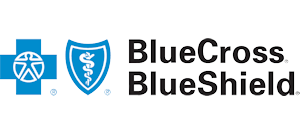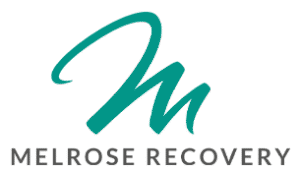Tramadol Addiction Treatment
Tramadol Addiction Treatment – Welcome to Melrose Recovery, your pathway to transformation and healing. Located in the vibrant heart of Los Angeles, California just moments away from iconic Hollywood and the picturesque beaches of Santa Monica and Venice, we are dedicated to changing lives. Since 2015, our comprehensive tramadol side effects treatment approach encompasses detoxification, residential care, and aftercare services, all tailored to meet each individual’s unique needs on their recovery journey.
Led by a compassionate team of addiction professionals and counselors, we offer a range of therapy programs designed to support and guide individuals suffering Tramadol withdrawal toward lasting sobriety. At Melrose Recovery, we believe in the power of personalized care and diverse treatment options to pave the way for a brighter future.

What is the Tramadol – Tramadol Addiction Treatment
Tramadol is a prescription medication used to treat moderate to moderately severe pain. It’s part of a class of drugs called opioid analgesics, although it’s considered to be less potent than stronger opioids like morphine or oxycodone.
Key Facts:
-
Brand names: Common ones include Ultram, ConZip, and others.
-
How it works: Tramadol works by binding to opioid receptors in the brain, which helps block pain signals. It also affects levels of serotonin and norepinephrine, neurotransmitters involved in mood and pain perception.
-
Forms: Available in immediate-release and extended-release tablets or capsules.
Common Uses:
-
Short-term treatment of acute pain (e.g., after surgery or injury)
-
Management of chronic pain conditions (e.g., osteoarthritis or back pain), often when other painkillers are not effective
Side Effects:
-
Dizziness
-
Nausea
-
Constipation
-
Drowsiness
-
Headache
Serious Risks:
-
Addiction and dependence, especially with long-term use
-
Seizures, especially at high doses or when combined with other medications
-
Serotonin syndrome, particularly when combined with antidepressants
-
Respiratory depression (slowed breathing), especially when mixed with alcohol or other sedatives
Tramadol Addiction Treatment: A Path to Recovery
Recovering from tramadol addiction involves more than just quitting the drug—it requires a comprehensive plan that includes detox, therapy, and ongoing support. With the right treatment approach, it’s possible to overcome dependence and regain control of your life.
Step One: Detox
The first stage of recovery is detox—cleansing the body of tramadol and managing withdrawal symptoms. Quitting “cold turkey” can be risky and uncomfortable, so most medical professionals recommend a gradual tapering process under supervision.
Medical detox, offered in many inpatient and outpatient programs, helps ease the discomfort of withdrawal while keeping you safe. Detox not only addresses physical dependence but also prepares you mentally for the next phase of treatment.
Next Steps: Therapy and Rehab
Once physical dependence is addressed, treatment shifts focus to the psychological aspects of addiction. Inpatient and outpatient rehab programs use evidence-based therapies like:
-
Individual counseling
-
Group therapy
-
Cognitive Behavioral Therapy (CBT)
-
Dialectical Behavior Therapy (DBT)
-
Motivational Enhancement Therapy (MET)
-
Holistic treatments (yoga, art therapy, equine therapy)
-
12-step support groups
Each approach targets the emotional triggers, thought patterns, and behaviors that fuel tramadol use.
Choosing the Right Level of Care – Tramadol Addiction Treatment
Not all rehab centers are the same, so it’s important to choose one experienced in treating tramadol addiction and co-occurring disorders like anxiety, depression, or other substance use.
Inpatient Rehab – Tramadol Addiction Treatment
This is best for those with severe addictions or complex needs. Inpatient programs provide 24/7 support in a structured environment free from everyday distractions and triggers.
-
Typical program length: 28 to 90+ days
-
Includes medical detox and comprehensive therapy
-
Offers a focused, immersive healing experience
Outpatient Rehab – Tramadol Addiction Treatment
Outpatient care works well for those with mild to moderate addictions, or as a step-down after inpatient treatment.
-
Less intensive but more flexible
-
Allows you to maintain work, school, or family responsibilities
-
Usually includes therapy, support groups, and medical check-ins
-
More affordable than inpatient rehab
Some outpatient programs also offer medically supervised detox, where doctors monitor withdrawal and help taper off the drug safely.
Aftercare and Relapse Prevention – Tramadol Addiction Treatment
Recovery doesn’t end when rehab does. Continued care is critical to staying sober. Ongoing therapy and participation in support groups like Narcotics Anonymous (NA) or Dual Recovery Anonymous (DRA) can help maintain progress and reduce the risk of relapse.
Key strategies for avoiding relapse include:
-
Stay healthy: Eat nutritious meals, exercise regularly, and get plenty of sleep to support mental and physical recovery.
-
Stick to a routine: A structured schedule keeps your mind focused and reduces idle time that can lead to cravings.
-
Know your triggers: Identify people, places, or situations that make you want to use—and avoid them.
-
Build a support system: Surround yourself with friends, family, therapists, sponsors, and peers in recovery.
-
Try new hobbies: Engaging in sober activities can help fill your time and bring meaning to your life.
-
Manage pain in new ways: If you used tramadol for chronic pain, explore non-opioid alternatives like yoga, massage therapy, acupuncture, or physical therapy.
Even something as simple as attending a comedy show can help—after all, laughter really can be powerful medicine.
Take the First Step Toward Recovery – Tramadol Addiction Treatment
If you’re ready to quit tramadol, Melrose Recovery is just a phone call away. Treatment options available—from medical detox to inpatient or outpatient programs tailored to your needs.
You don’t have to go through this alone. Start your journey today.
Frequently Asked Questions About Tramadol – Tramadol Addiction Treatment
General Information
What is Tramadol used for?
Tramadol is used to treat moderate to moderately severe pain in adults.
Is Tramadol an opioid?
Yes, it is a synthetic opioid analgesic, though it also affects serotonin and norepinephrine levels in the brain.
How is Tramadol taken?
It is available in immediate-release and extended-release tablets or capsules, taken orally.
Pros (Advantages of Tramadol)
What are the main benefits of Tramadol?
It effectively reduces moderate pain, has a dual mechanism (opioid and SNRI-like action), and is often better tolerated than stronger opioids.
Is Tramadol less addictive than other opioids?
It has a lower risk of addiction compared to stronger opioids like morphine or oxycodone, but still carries a dependency risk.
Can Tramadol be used for chronic pain?
Yes, particularly the extended-release form may be used for ongoing pain management.
Is Tramadol safer for elderly patients?
It is sometimes preferred due to a milder side effect profile, but caution is still necessary due to fall risk and confusion.
Can Tramadol be used in combination with other medications?
Yes, it is often part of a multimodal pain management plan, but care is needed to avoid interactions.
Is there a ceiling effect with Tramadol?
Yes, increasing the dose beyond a certain point does not significantly increase pain relief but raises side effect risks.
Can Tramadol help with neuropathic pain?
It may provide some relief in neuropathic pain due to its SNRI-like properties.
Cons (Risks and Drawbacks of Tramadol) – Tramadol Addiction Treatment
What are common side effects of Tramadol?
Nausea, dizziness, constipation, headache, and drowsiness are common.
Can Tramadol cause addiction?
Yes, especially with prolonged use or misuse. Dependence and withdrawal can occur.
What are signs of Tramadol overdose?
Slow breathing, unconsciousness, seizures, and pinpoint pupils are serious overdose signs.
Can Tramadol cause seizures?
Yes, particularly at high doses or in people with a history of seizures.
Is serotonin syndrome a risk with Tramadol?
Yes, especially if combined with other serotonergic drugs (e.g., SSRIs, SNRIs).
Does Tramadol interact with antidepressants?
Yes, it can interact dangerously, increasing the risk of serotonin syndrome.
Can Tramadol impair driving?
Yes, it can cause drowsiness or dizziness, impairing alertness.
Is Tramadol safe during pregnancy?
No, it’s generally not recommended due to potential risks to the fetus and neonatal withdrawal.
Can Tramadol cause withdrawal symptoms?
Yes, symptoms include anxiety, sweating, nausea, shaking, and irritability.
Is Tramadol safe for people with liver or kidney disease?
Dose adjustments are required, and it may not be recommended in severe cases.
Regulatory and Safety Considerations – Tramadol Addiction Treatment
Is Tramadol a controlled substance?
Yes, in the U.S., it is classified as a Schedule IV controlled substance.
Has Tramadol been abused recreationally?
Yes, it has been misused for its euphoric effects in some regions.
How should Tramadol be discontinued?
Gradually, under medical supervision, to reduce withdrawal symptoms.
Is Tramadol available over the counter?
No, it requires a prescription in most countries due to abuse potential.
Can Tramadol be used long-term?
It can be, but only under close medical supervision due to tolerance, dependence, and side effect risks.
Don’t Wait to Look for a Drug Addiction Treatment Program
Get In Touch
info@melroserecovery.com
501 North Mariposa Ave, Los Angeles, CA 90004








